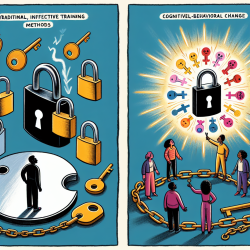Introduction
As a practitioner in the field of speech-language pathology, staying informed about the latest research and integrating those findings into your practice is crucial for enhancing outcomes for children. While it may seem unconventional, insights from ecological and conservation research, such as the study on the European Union's Natura 2000 network, can offer valuable lessons in interdisciplinary collaboration and data-driven decision-making. This blog explores how findings from the research titled "Species, Habitats, Society: An Evaluation of Research Supporting EU's Natura 2000 Network" can be applied to improve your practice.
Understanding the Natura 2000 Research
The Natura 2000 network is an ambitious initiative by the European Union aimed at conserving biodiversity across member states. The research conducted by Popescu et al. (2014) systematically reviewed 572 scientific articles to assess the network's effectiveness and identify research gaps. The study highlights the dominance of ecological research over social and policy studies, revealing a disconnect between these disciplines. This finding underscores the importance of interdisciplinary research to address complex challenges in biodiversity conservation.
Applying Interdisciplinary Insights to Speech-Language Pathology
While the Natura 2000 research focuses on ecology and conservation, the principles of interdisciplinary collaboration and data-driven decision-making are universally applicable. Here are some ways you can implement these insights in your practice:
- Embrace Interdisciplinary Collaboration: Just as the Natura 2000 research emphasizes the need for collaboration between ecological and social scientists, speech-language pathologists can benefit from working with educators, psychologists, and other healthcare professionals to develop comprehensive intervention plans.
- Focus on Data-Driven Decisions: The research highlights the importance of using data to inform conservation strategies. Similarly, practitioners should rely on evidence-based practices and data from assessments to tailor interventions to each child's unique needs.
- Address Social and Environmental Factors: The Natura 2000 study reveals the impact of social and policy issues on conservation outcomes. In speech-language pathology, considering the child's environment, family dynamics, and cultural background can enhance the effectiveness of interventions.
Encouraging Further Research
The research by Popescu et al. (2014) also identifies gaps in the current understanding of the Natura 2000 network, particularly in integrating ecological and social perspectives. This serves as a reminder of the ongoing need for research in speech-language pathology. Practitioners are encouraged to engage in or support research efforts that explore innovative approaches to therapy, assess the long-term impact of interventions, and address diverse populations.
Conclusion
The Natura 2000 research provides valuable lessons in interdisciplinary collaboration and data-driven decision-making that can be applied to speech-language pathology. By embracing these principles, practitioners can enhance their skills and improve outcomes for children. To delve deeper into the original research, please follow this link: Species, Habitats, Society: An Evaluation of Research Supporting EU's Natura 2000 Network.










